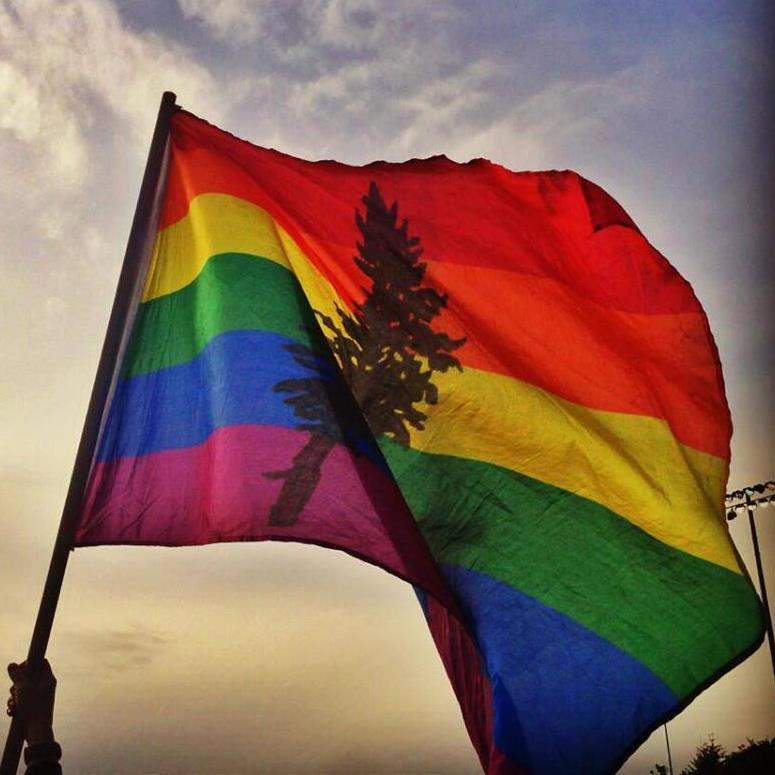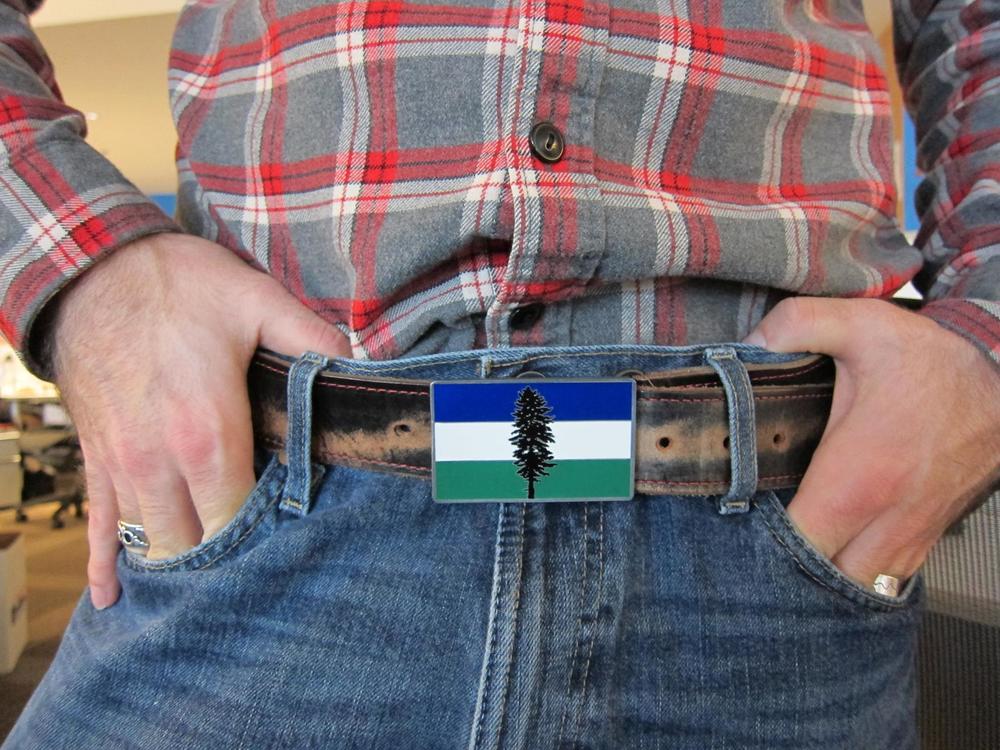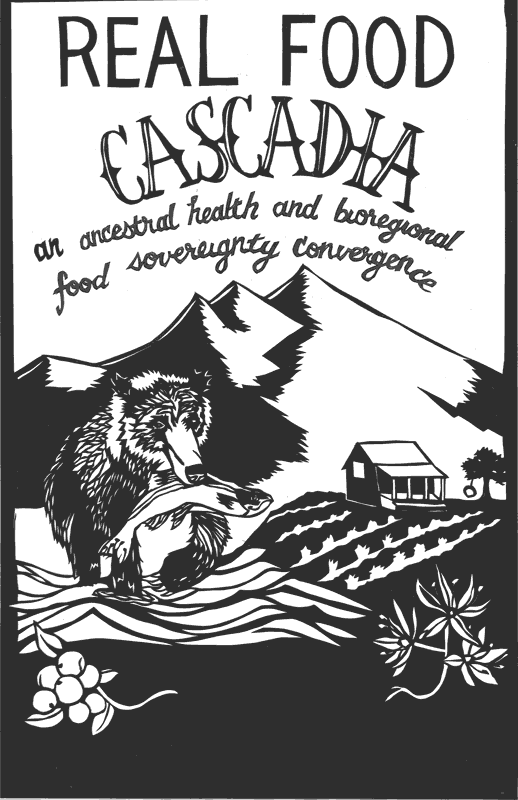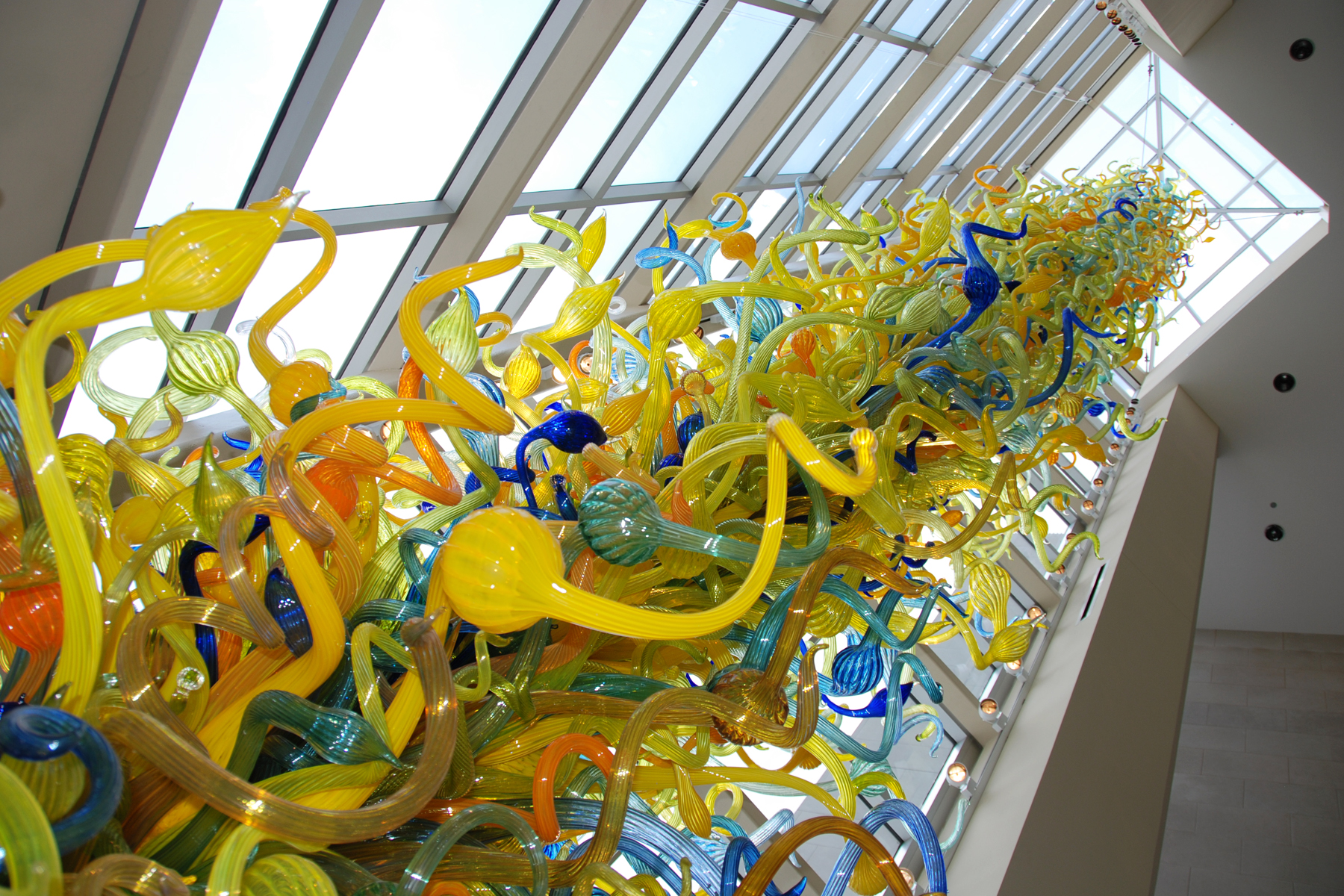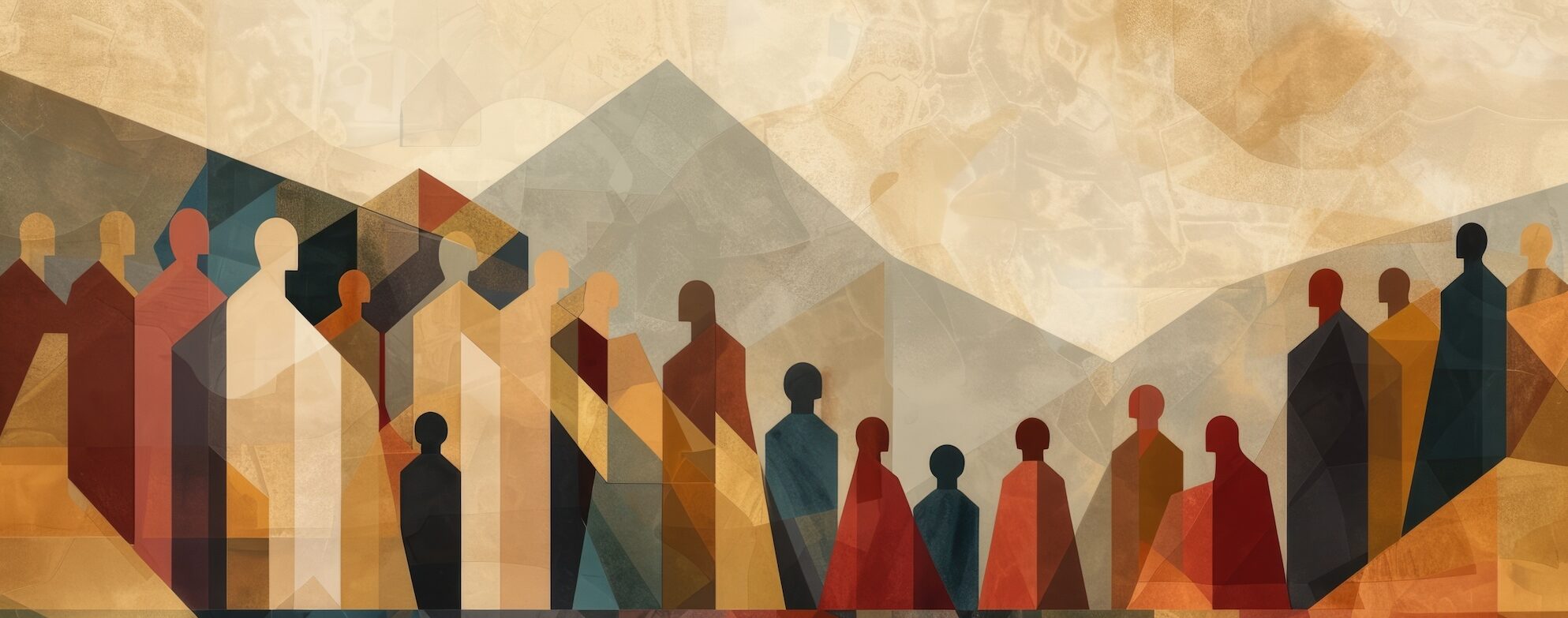What does it mean to be from the Pacific Northwest?
Is there such a thing as Cascadian culture?
Christ & Cascadia was founded a couple of months ago on a rather simple conviction. If Christians truly wish to connect with this little corner of the world, they will need to take some time to listen, explore, and understand it.
So, what is Cascadia?

map courtesy of cascadia-institute.org
Technically speaking, “Cascadia” is something called a “bioregion” which includes Oregon, Washington, British Columbia, and pieces of Alaska, California, Idaho, and Montana. Its boundaries are not political—they are natural. By definition, bioregions like Cascadia share a common set of natural characteristics (animals, plant life, soil, watersheds, climate, and geology).
That said, many observers have begun to argue that Cascadia shares a lot more in common than mountains, salmon, and rain—it shares some important cultural and spiritual characteristics as well. More than lines on a map, regional observers have begun to argue that Cascadia is also a cultural and spiritual state of mind.
But is this true? Do Cascadians really share some discernible cultural and spiritual characteristics?
Yes.
I want to argue that they do.
I define “culture” as a way of living and interacting with the world through music, the arts, language, food, agriculture, business, politics, science, technology, religion and spirituality. Culture is, in other words, “a way of doing things.”
My argument is simple, Cascadians have a discernible “way of doing things” that is, in many ways, distinct from Texans, Albertans, Carolinians and Québécois. While the natives of Cascadia may not recognize their regional eccentricities (just as fish do not recognize water!), newcomers from Georgia, Ottawa, New York and New Brunswick recognize these cultural eccentricities right away.
But before I make my argument I should mention three quick caveats.
First, my argument is not meant to be comprehensive or complete. This is the first of many swings which I, and many other Christian writers at Christ & Cascadia, will take at discerning the slippery spirits of Cascadia. This article is not the end, but the beginning of a conversation.
Second, I want to recognize that my arguments have been deeply enriched by the pioneering work of several scholars and observers of Cascadian culture and spirituality.
Third, it must be clear that I am not arguing that Cascadians are all the same. Cascadians are wildly diverse. It will be quite easy to find exceptions to just about everything I have to say about “Cascadian culture” and “Cascadian spirituality.” Furthermore, I am not arguing that Cascadia has a completely unique culture. The region has much in common with the rest of Canada and the United States.
What I am arguing is that there are some cultural and spiritual trends in Cascadia that are prominent, discernible, and worthy of the church’s attention and discussion.
The Contours of Cascadian Culture
Often an afterthought to the eastern power centers of New York, DC, Toronto and Ottawa, the region of Cascadia is tremendously important to North America’s economic, political, and cultural life. Every year 17 million Cascadians produce 800 billion dollars in goods and services. If Cascadia were to become an independent country tomorrow, its economy would instantly rank among the top 25 nations in the world.
A quick Internet search of the term “Cascadia” reveals a plethora of online communities and discussions about the region. Many of these sites advocate the actual secession of Cascadia from the United States and Canada. Groups within this burgeoning movement typically dream of the formation of a new Cascadian state which values direct democracy, environmental stewardship, local agricultural sourcing, social justice, technological innovation, and local empowerment. Some of the more thoughtful discussions on Cascadian identity can be found at the The Cascadia Institute and Cascadia Now. The photos below, taken from a variety of Cascadian websites, provide an aesthetic sense of the movement.
[cycloneslider id=”cascadia-photos”]
Cascadia’s population has exploded in the last century and its growth shows little sign of letting up. In the last century Cascadia’s population grew ten fold. Nearly all of this growth took place in the urban and suburban communities along “Main Street Cascadia” which runs between Portland, Seattle, and Vancouver BC. Officially labeled a “mega-region,” 80% of all Cascadians live along this narrow strip of clogged freeway.
A century ago the region’s economy was largely based on resource extraction (mining, logging, fishing, and farming). Yet, in the span of only two generations, Cascadia has largely leap-frogged the age of industrialization directly into the age of information and technology. The grandchildren of Cascadia’s loggers and fisherman are now designing computer games, smart phone applications, online retail shops, and 21st century airliners.
Today Cascadia has become a critical global hub for technology, communications, aerospace, retail, and film. Portland is home to international corporations such as Nike, Intel, and Columbia Sports Wear. Seattle is home to Microsoft, Amazon, Costco, and Starbucks. While Vancouver BC hosts the Mountain Equipment Co-op, Lions Gate Films, and Telus Communications among many others.
The innovative and entrepreneurial spirit of Cascadians has made many of them increasingly wealthy in comparison to the rest of the United States and Canada.
Beyond their considerable wealth, Cascadians also tend to be highly educated. Cascadian universities and research institutions regularly rank among the top in the world. Residents of Cascadia typically earn more undergraduate and graduate degrees per capita than states and provinces to the east. Moreover, Cascadian industries in aerospace, technology, and communications increasingly attract highly skilled and educated workers from around North America, the Pacific Rim, and the world.
Equipped with high levels of education and wealth, Cascadians have the time and resources to engage in a wide range of recreational, artistic, spiritual, and political activities.
Politically speaking, Cascadia appears to be deeply divided by geography. Those in the urban and western areas tend to be politically progressive. Cascadian progressives tend to favor strong environmental protections, ‘live and let live’ social laws, and a larger and more active welfare state. Those in the rural, suburban, and eastern areas tend to be more conservative and even libertarian in their political views. Conservative Cascadians tend to favor agricultural and industrial protections, conservative moral laws, and a larger more active marketplace. The progressive majority holds considerably more cultural, economic, and political power than the conservative minority. This imbalance in power has led to more than a little animosity between the communities.
Is there a Cascadian form of politics? The east/west, urban/suburban division would seem to suggest there is not.
However, deep below the surface, Cascadians are more politically united than they would like to admit. I can find at least two common ideological threads which span the political divide. First, Cascadians share a deep devotion to individual liberty as an overriding political good. On the whole, if you are from Cascadia you are either a liberal or you are a libertarian. More liberty is the accepted purpose of political life. Progressive and conservative Cascadians simply disagree about how their individual liberty is going to be achieved. Progressives look for freedom through a larger state. Conservatives look for freedom through a larger marketplace.
The second feature of Cascadian politics is a deep passion for local and direct democracy. Whether on the right or the left, Cascadians tend to bristle at the notion of being controlled by either Washington DC or Ottawa. In my own state of Washington we don’t even like to be led by the politics of Olympia! The direct democracy of the voter-led “referendum” is a right held to be sacred by many Washingtonians.
In terms of lifestyle, Cascadians are well known for their love of the outdoors. In the west they can be found kayaking, hiking, and mountain climbing. In the east they can be found hunting and fishing. Cascadian fashion trends seem to closely follow this outdoors lifestyle. Clothing tends to be marked by a less formal, outdoorsy, and earth-toned aesthetic. One might call it “REI chic” in the west and “Cabela’s chic” in the east.
Some observers of Cascadian culture have even remarked that music from the region tends to have rougher, more raw, and authentic edge to it. One commentator remarked that “many bands coming out of Washington, Oregon and B.C. have shared a regional ‘tough sound,’ like that associated with Seattle’s grunge (Kurt Cobain and Pearl Jam) and Vancouver’s punk scenes (DOA and Pointed Sticks).” Nirvana’s infamous decision to depart from the smooth overly-produced style of mainstream 80’s rock was a quintessentially Cascadian choice. In the same way, Macklemore, an emerging rapper from Seattle, has refused to play the traditional hip-hop game of money, murder, and misogyny. His creative, vulnerable, eclectic, and unassuming style stands out in the genre.
Cascadian cuisine tends to focus on organic and locally harvested fruits, vegetables, meats, and seafood. Apples, salmon, crab, coffee, locally produced wine and beer are staples for many Cascadian palates. Moreover, placed on the edge of the Pacific Rim, the significant influence of Asian cuisine on regional food culture cannot be ignored. The multicultural nature of Cascadia is reflected in the wide variety of foods that have been embraced in the region.
The art scene of Cascadia has been heavily influenced by the region’s intimate relationship with nature. The mountains, rivers, and islands of the region loom large in the Cascadian aesthetic. The iconic aboriginal or Native American style of carving and painting is ubiquitous as well. One observer notes that the “region’s iconic visual artists, such as B.C. painters Emily Carr and Jack Shadbolt and Washington’s glass-blowing Dale Chihuly, have all seen nature as a living symbol of transformation, power and myth.”
In part two we will explore the contours of Cascadian values and spirituality.
PART TWO (Coming Soon)



